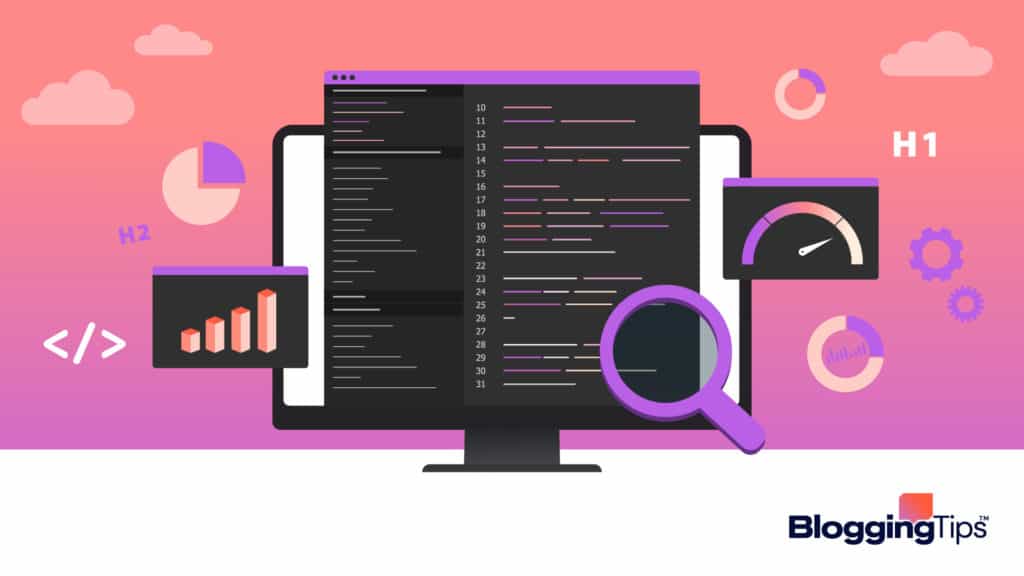Content is King, as the famous saying goes.
If so, Search Engine Optimization is most certainly the Pope.
All jokes aside, if you want to survive in the modern digital marketing world, you should know that SEO-friendly content is a must.
Google boasts more than 80% of the 2022 search engine market.
If you fail to rank high enough on Google search engine results pages, say goodbye to customers that could help your business thrive.
The best way to rank high is by adhering to SEO best practices when writing your content.
As luck would have it, you have found a comprehensive guide designed to help you get started.
Search Engine Optimization Basics
When you begin navigating the world of SEO, you need SEO-specific tools to help you increase traffic and visibility for your website.
They are vital when you perform a content audit to improve your SERP rankings.
While you should avoid enterprise-level SEO strategies at first, these tools are a great jumping-off point to help incorporate SEO best practices into your marketing routine.
Another great way to get comfortable with SEO basics is to check out SEO blogs for inspiration.
Why Do You Need to Apply Best Practices for SEO?
Visibility is a make-or-break factor for revenue in digital marketing.
Without visibility, quality content is useless. There is good news, though.
Even in the age of content overload, almost 60% of results ranking in the top 10 Google pages are more than three years old.
That sure is a lot of untapped opportunities, especially if you can find viable ways to penetrate your market via quality content.
What is the Most Important Practice in SEO?
Search engine optimization is a powerful way to ensure your content reaches its desired audience.
When you consistently use SEO best practices correctly, they can translate into lucrative success.
Of these practices, formatting is the best path to better rankings.
Pay careful attention to all your titles, headings, and tags because your formatting choices directly impact where your site appears in the SERPs.
What are the SEO Best Practices Right Now?
SEO is constantly evolving and changing, as is the norm for most digital marketing today.
That is fitting because Google algorithms are constantly changing too.
So the best SEO practices from last year or the year before might fall flat in 2022.
To stay on top of SEO in the current market, you should always keep track of SEO trends and integrate them into your SEO strategy.
Here are a few of the best SEO practices of 2022 to help stay current and relevant in the SERPs.
1. EAT Principle
EAT is an acronym for expertise, authoritativeness, and trustworthiness.
It originated in the Search Quality Rater Guidelines that human quality raters at Google use to assess search results.
You should ensure your content is current, check and double-check your facts, and only use credible sources for backlinks.
2. Video
By the end of this year, video content will constitute more than 80% of all IP traffic.
So you can see why it is so critical to include videos in your SEO strategy.
When Google shows a thumbnail of your video beside the search result, users will click on the link more often.
Videos turn your link into a rich snippet with a higher click-through rank than snippets without video.
3. People Also Ask
Whenever a user uses a search engine, they generate a list of closely related questions to their original query.
That is the People Also Ask feature.
In a sample of 2.5 million google queries, over 48% came from suggestions from the PAA feature.
Answering these commonly asked questions in an FAQ section will help you rank higher in the search results.
You can also use the suggested queries to initiate more in-depth keyword analysis.
General SEO Best Practices

Before we get into the specialized SEO categories, here are some SEO best practices to improve your SEO strategy.
1. Meet Core Web Vitals
In 2020, Google unveiled a few new page experience signal metrics called Core Web Vitals. They help Google quantify how users interact with a page and their overall experience.
The new metrics are Largest Contentful Paint (LCP), First Input Delay (FID), and Cumulative Layout Shift (CLS)
They measure how quickly the page becomes visible upon loading, how long it takes before a user can interact with a web page, and the overall visual stability of a page.
If your page is unstable, slow to load, or full of advertisements, it will give users an easy excuse never to return.
2. Ensure Your Website is Secure
Dangerous websites only serve to weaken SEO strategies and tank SERP performance.
Google takes security seriously, and they penalize websites with poor security. As a result, those sites consistently rank lower.
Even the most successful pages can come crashing down due to a well-planned cyber attack.
Your reputation and rankings are at risk if you fail to address ongoing security concerns.
3. Get Search Intent Right
Search intent is sometimes called audience intent or user intent.
It deals with the purpose behind an individual online search. Figuring out search intent lets you understand why users are conducting specific queries.
Uncovering search intent can be difficult, but you can always get the answers straight from the source.
It is a great idea to craft a survey to appear on your page. A survey could give you insight into what your audience is trying to find.
4. Target Keywords You Can Rank For
Keyword research is one of the most pivotal aspects of successful SEO, and for a good reason.
Good keyword analysis guides you on what target phrases you can use to help rank higher in the SERPs.
You want to find plenty of keywords to get better rankings.
When dealing with highly competitive keywords, it is best to try and change your strategy so you can rank higher with keywords that aren’t so saturated.
5. Understand Topical Authority
When your page has a high perception of authority, it ranks better in organic searches.
To rank high on Google search engine results, provide authoritative content to your visitors. The more trustworthy the content, the more trust you build with your user base and Google.
Topical authority measures authority ranking for your page based on the quality of your content, the authoritative links to your post, and the total amount of social media shares.
Content SEO Best Practices

Content SEO is any content that helps your page rank higher in search engines.
It involves anything that has to do with the writing and structure of your page’s content.
The most important things to get right in content SEO are your keyword strategy, copywriting, and site structure.
Read on to find out more content SEO best practices and how they can help your page.
1. Choose the Right Type of Content
While a well-designed web page is important, and a good user interface goes a long way, it is quality content that determines your result page rankings in the end.
This is why content SEO is so essential to your overall SEO strategy.
Google closely scans all the text on your website and what you publish helps the algorithm decide your ranking.
Your content needs to be topical, focused, highly-structured, easy to understand, and of excellent quality.
2. Write Helpful Content
It doesn’t matter if you’re selling something or trying to get new listeners for your podcast (yes, podcasts also need SEO) your content needs to be helpful, informative, and useful.
Two months ago, Google unveiled its new Helpful Content Update, an automated sitewide ranking signal that differentiates between content written to rank highly and content that is useful to users.
Google claims the update will reward quality content and those rewards will translate to higher rankings.
So avoid publishing content that appeals to search engines rather than actual humans.
Don’t write for SEO traffic, write for flesh and blood humans.
Publish content that was created for a specific audience, answers their questions, and meets your reader’s wants and needs.
3. Write Thorough Content
Google prefers complete, comprehensive content that understands intent.
They want content that stays ahead of implications, covers plenty of subtopics, and keeps up with the latest query trends.
Be sure to conduct thorough research and keyword analysis for every single topic you cover.
That way you can ensure your readers enjoy plenty of comprehensive content and you enjoy better site rankings.
4. Optimize Content With an Optimization Tool
One way to quickly improve rankings and web page visibility comes from content optimization tools.
These tools help content creators, web page admins, bloggers, and E-Commerce sites optimize their content for higher SERP ratings.
They can also help revamp and improve existing content.
Most content optimization tools are simple and effective, and there are lots of different options to choose from in 2022.
5. Add Internal Links to Other Articles
If your content doesn’t have links, then your content won’t rank high.
Google can locate webpages much easier when they are linked from somewhere else on the web.
Internal links work just fine to help your page rank higher and using links from one page of your website on another page is one of the most fundamental SEO best practices.
Internal links help both Google and your users find your content faster and it helps readers navigate your content with ease. Search engines use internal links to rank content as well.
Use contextual links as much as possible to lead users to related content on your webpage.
The more links a page gets the higher Google’s algorithm values.
This is why internal links are pivotal to a good SEO strategy.
On-Page SEO Best Practices
On-page SEO, also referred to as on-site SEO, deals with optimizing web pages for both users and search engines.
This includes things like URLs, title tags, Meta descriptions, and more.
Any optimizing signals that occur on your page are considered on-page SEO and these are some of the best practices you need for good on-site search engine optimization.

1. Title Tags
The clickable text on the SERPs that leads to your webpage is called a title tag.
Badly crafted title tags will hurt your website traffic and your rankings.
Even if a bad title tag were to make it to the top of the list, no one is going to click on it.
Therefore no one is viewing the webpage, making it obsolete.
Though short, the title tag has an outsized effect on your site’s click-through rate (CTR).
CTR refers to the percentage of users who clicked on your search result and chose to click it.
2. URL
You want to have a good URL so search engines and users can quickly understand what the link is all about.
An accurate URL gives potential readers a good idea of what they will see when they visit the webpage.
It should also give Google a glimpse into the destination page to determine its overall relevance and rankings.
3. Post Structure
Post structure works best when it makes the user experience easier.
When you format content correctly readers can quickly scan it and decide whether they want to read it all the way through.
It’s important to make your content easily scannable, easy to navigate with subheadings, and that it utilizes short paragraphs.
You should also use bold to emphasize important points and break up large blocks of text into smaller ones, or even lists.
4. Content
Cover subjects your target audience wants to read about! Use keyword research as a navigation tool to understand what your readers want to see.
Additionally, keep in mind that longer content ranks better because it gives search engines more information about the topic of your page.
The longer the content, the more confidence a search engine has that your page is a relevant result for a keyword.
5. Meta Descriptions
A meta description is a small bit of text that briefly summarizes the content of your page.
Sometimes Google shows the meta description beneath your title tag in the search results.
It is a nice way to invite readers to find the information they need and makes them more likely to click on your link.
Link Building SEO Best Practices

Effective strategies for link building start with your content, so as always quality content is an invaluable part of any SEO strategy.
Once you have that quality content, the next step is to promote it.
That’s where link-building shines.
The more links you collect from web pages in your niche, the more Google assumes you are an authority on that subject.
You can bulk up your link-building efforts with social media linking, guest blogging, and link roundups.
1. Create High-Authority Links
When your webpage is linked by a site with high authority on Google, your page gets some of that good influence as well as a ranking boost.
You can find some high-authority sites that allow guest posts to create high-authority links.
You can reach out to news outlets, or high-authority sites with blogging outreach efforts as well.
2. Avoid Junk Links
Junk links are any links that can bring your site’s search engine rankings down.
These dead-end links can potentially harm your page.
They are usually spammy and contain no helpful content, so Google either ignores them or penalizes them.
There are also manipulative links that are created to manipulate PageRank to improve rankings.
Those should always be avoided.
3. Don’t Spam When Doing Outreach
Blogger outreach can help you build high-authority links, but you should always have a highly personalized, well-researched plan in place before attempting it.
Sending generic emails that sound carbon-copied or spamming inboxes when your requests go unanswered is borderline harassment.
That behavior will only hurt your chances.
4. Monitor Your Competitors and Industry
Competitive analysis is a very important part of SEO.
It involves researching your competitor’s content and using their tactics to achieve better rankings.
Figuring out their keywords, links, and structure can help you innovate quality content of your own and improve your rankings.
Just be sure you publish original material and don’t plagiarize any competitors along the way.
5. Get Familiar With Link Disavows
Disavowing a backlink is a fairly serious undertaking that can drastically shift your search engine rankings.
Only disavow a link if you know for certain is toxic and hurting your rankings.
A link from a low-domain site or a low-ranking tire is not a link you should disavow.
Frequently Asked Questions
Though we’ve gone over a thorough list of SEO best practices for 2022, you might still find yourself with some questions.
Here are some FAQs from fellow users on Google.
What are the 3 pillars of SEO?
The 3 pillars of SEO are Authority, Relevance, and Experience. Every link used should uphold these pillars to ensure your content ranks high.
What is an SEO checklist?
Any plan of action you use to try and ensure optimum search engine optimization could be an SEO checklist.
A good place to start is to use all the suggestions in this guide and then tack on a few more SEO tenants like:
Use The Google Search Console
Use Google Analytics
Use Your Keyword Once In The First 150 Words
Mobile Friendly Sites
Update Outdated Content
Every webpage is different and each has its own unique SEO needs, but anyone who wants to rank better would benefit from planning a good SEO checklist for their content.
Wrapping Up
At the outset, SEO might seem complicated, but once you get the basics down and realize how important search engine optimization is for your webpage, it’s much easier to understand.
Always stay informed on your industry and your competition, and remember that quality content is always the most important goal.
Above all else, don’t forget how formatting can pull a low-ranked link back up from the brink.
Stick to these SEO best practices and you’re bound to reap all the benefits a higher ranking has to offer.






